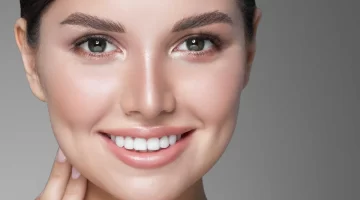Platelet-Rich Plasma (PRP) therapy has emerged as a promising, non-surgical solution for individuals struggling with hair thinning and early-stage hair loss. This innovative treatment harnesses the body’s own healing abilities by using a concentrated form of the patient’s own blood, rich in growth factors, to stimulate inactive or newly implanted hair follicles. When injected into the scalp, PRP promotes natural hair regrowth by improving blood supply to the hair root and increasing the thickness of the hair shaft. Unlike chemical-based treatments, PRP offers a more organic and low-risk alternative, making it particularly appealing to those seeking a more natural approach to hair restoration. With regular sessions and proper follow-up, many patients notice visible improvements in hair density and texture over the course of several months. In this blog post we will introduce PRP Therapy as a EB Clinic.
How PRP Stimulates Hair Follicles and Encourages Growth
PRP therapy works by utilizing the body’s natural healing properties to rejuvenate hair follicles and encourage growth. The process begins with a simple blood draw from the patient, which is then processed to isolate the platelet-rich plasma. This plasma is rich in growth factors and proteins that play a key role in tissue repair and regeneration. When injected into the scalp, PRP directly stimulates the hair follicles by increasing blood circulation to the area, enhancing the delivery of oxygen and nutrients. These growth factors also help to reactivate dormant follicles, encouraging them to enter the anagen (growth) phase of the hair cycle. Additionally, PRP reduces inflammation around the follicles and improves the scalp environment, which can be crucial for the prevention of further hair loss. Over time, this stimulation leads to thicker, healthier hair growth and a reduction in shedding, making PRP an effective and natural method for restoring hair density.
The Treatment Timeline: What to Expect from PRP Sessions
PRP therapy for hair loss typically involves a series of sessions spaced out over several months to achieve optimal results. The treatment timeline generally starts with an initial consultation where your healthcare provider will assess your hair loss pattern and determine the best course of action. During the first session, a small amount of blood is drawn, processed in a centrifuge to separate the platelet-rich plasma, and then injected into the scalp in the areas where hair growth is desired. The procedure itself is relatively quick, usually taking about 45 minutes to an hour, with minimal discomfort due to the use of a local anesthetic. After the initial treatment, most patients undergo additional sessions every 4 to 6 weeks for a total of 3 to 4 treatments, depending on their specific needs. Results typically begin to show after 3 to 6 months, with continued improvement in hair density and thickness over the course of the year. While some patients may notice significant regrowth after a few sessions, maintenance treatments may be necessary once or twice a year to sustain the results. Throughout the process, it’s important to follow aftercare instructions, avoid direct sun exposure, and refrain from washing the hair immediately after treatment to ensure the best outcome.
Combining PRP with Hair Transplants: Enhancing Results
Combining PRP therapy with hair transplant procedures has become a popular approach for enhancing the effectiveness and speed of hair restoration. While hair transplants involve the surgical relocation of hair follicles from one part of the scalp to areas experiencing thinning or balding, PRP therapy plays a complementary role by promoting the healing process and stimulating the growth of transplanted follicles. After a hair transplant, PRP is often used to accelerate recovery, reduce inflammation, and improve the overall success rate of the grafts. The growth factors in PRP help nourish the newly implanted hair follicles, encouraging faster and more robust regrowth. Additionally, PRP therapy can be used alongside hair transplants to stimulate dormant hair follicles in non-transplanted areas, helping to create a fuller, more natural-looking head of hair. By combining these treatments, patients can expect not only improved hair density and thickness but also a faster recovery time and longer-lasting results.
PRP therapy offers a natural and effective solution to combat hair loss. By utilizing platelet-rich plasma derived from your own blood, this treatment stimulates hair follicles, promoting the regrowth of healthier and stronger hair. When combined with hair transplants, PRP therapy accelerates the healing process, reduces inflammation, and encourages faster growth of transplanted follicles. While both PRP and hair transplant treatments can yield impressive results on their own, combining the two methods provides even more natural-looking, long-lasting outcomes. With consistent sessions, PRP therapy can significantly improve hair health and density, offering patients a comprehensive approach to restore a fuller head of hair over time.












Leave a Reply